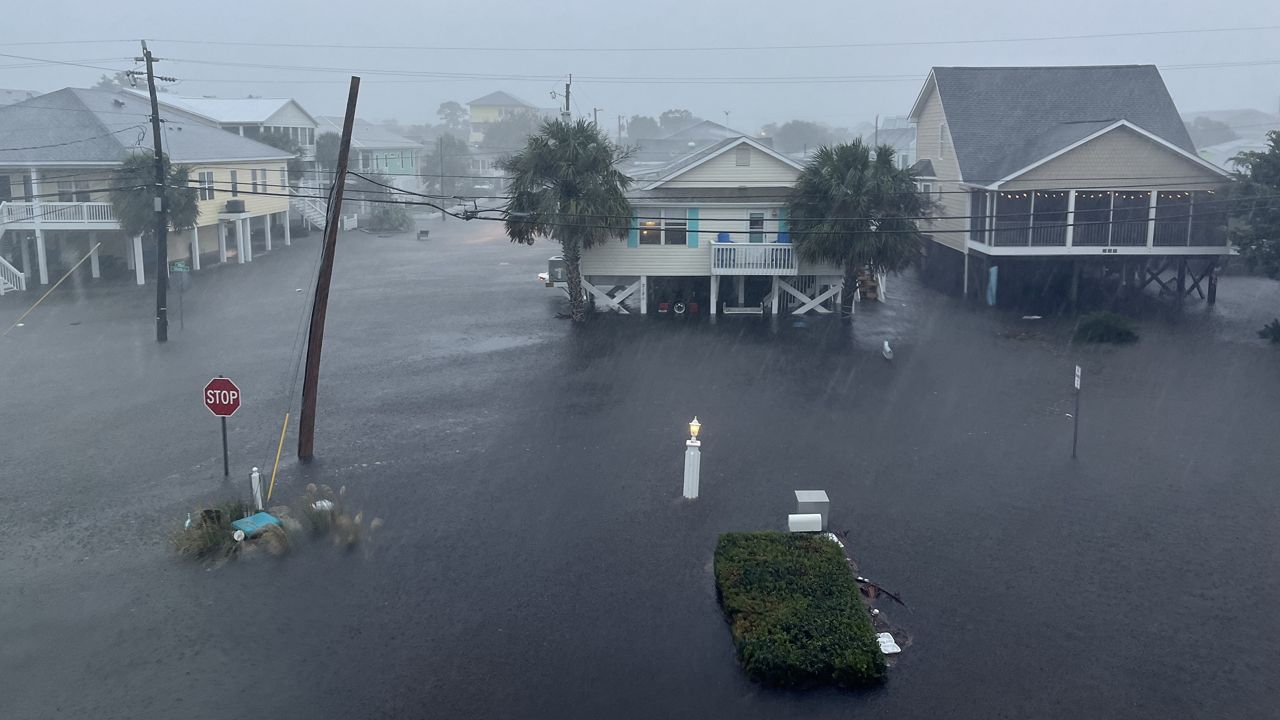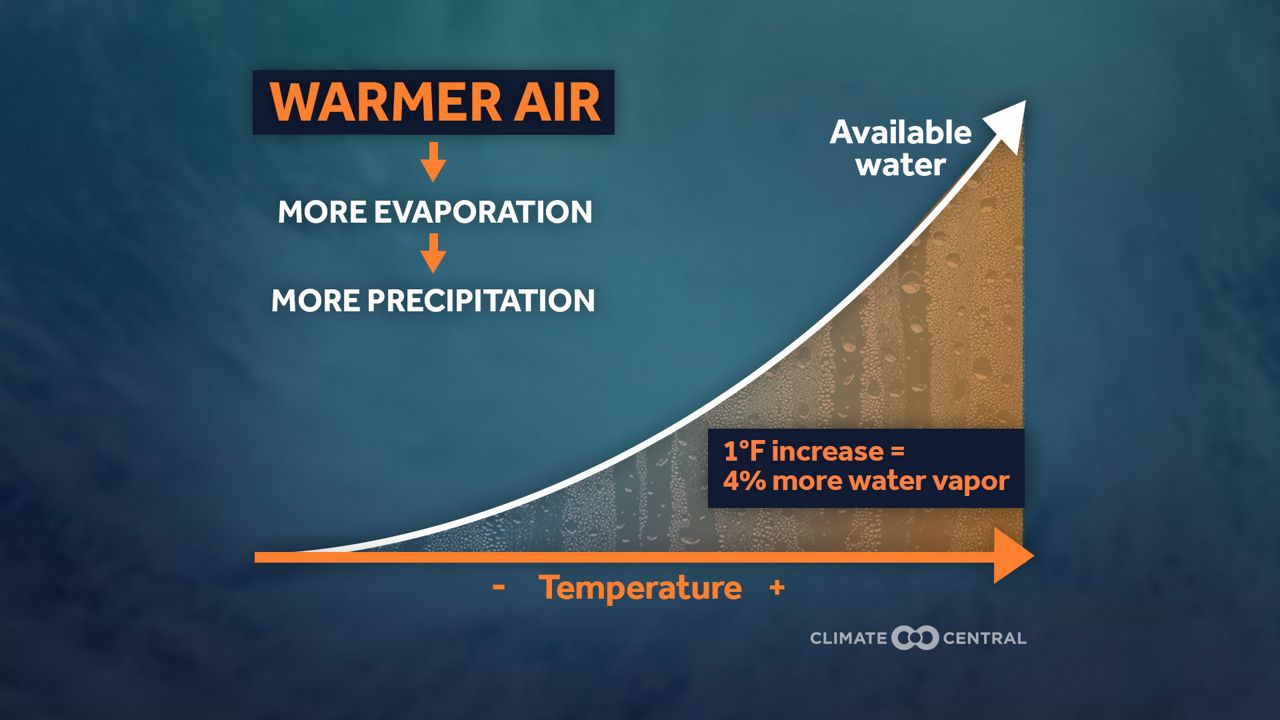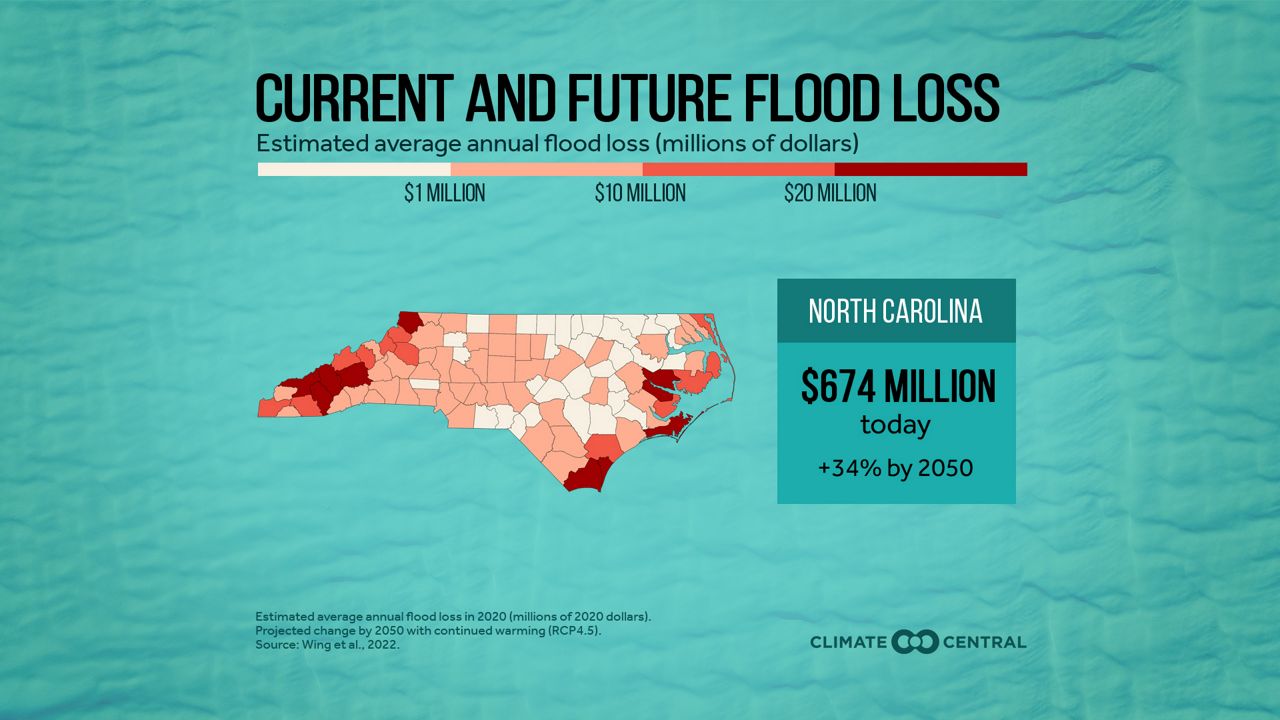Devastating flooding will likely happen more frequently and become more costly in future years and decades.
North Carolina is already experiencing that trend. Just this week, a system that never officially developed into a tropical storm dumped over 20 inches of rain on Carolina Beach. In nearby Brunswick County, over a foot fell in several locations.

The flooding that resulted from the deluge of rain would be considered a once-in-a-lifetime event in the past. According to the National Weather Service, based on past climate data, the rain that fell on Carolina Beach has a 1 in 1,000 probability of happening.
These types of flood events are happening more often though. Just six years ago, Hurricane Florence produced even higher rainfall totals in the region. Up to 36 inches fell in parts of southeastern North Carolina from that storm in 2018.
In 2016, Hurricane Matthew never made landfall in North Carolina but heavy rain was pulled inland resulting in catastrophic river flooding that lasted for days after the storm.
Other storms without a name caused extensive flooding in some of the same areas in 2010 and 2015. There was also Hurricane Floyd in 1999 that devastated much of eastern North Carolina with flooding.
Tropical systems have long made lasting impacts in the Carolinas even before we have reliable weather records. However, there is a clear trend that these storms are getting wetter, and there's a clear link to climate change.
A warmer atmosphere can hold more moisture. That leads to heavier rain, even in non-tropical systems.

A study at Stony Brook University, published in Science Advances, found that a warming climate enhanced Florence's extreme rainfall from 2018.
The North Carolina Climate Science Report published in 2020 stated: "Heavy precipitation accompanying hurricanes that pass near or over North Carolina is very likely to increase, which would, in turn, increase the potential for freshwater flooding in the state."
In a project to help the North Carolina Department of Transportation prepare bridges for future flooding, researchers at North Carolina State University have been studying the impacts of future storms. A simulation based on current warming trends, found Hurricane Florence at the end of this century would produce a maximum rainfall of almost 56 inches, or 20 inches more than when the storm hit in 2018.
Flooding will likely have a more costly impact on the state well before the end of this century though.
An analysis from Climate Central found flood losses in North Carolina will cost 34% more by 2050 than they will now with some of the highest costs not only coming near the coast but also in western North Carolina.

Heavier rainfall is just one of the ways a changing climate is expected to affect hurricanes in the future. A rising sea level will add to the storm surge created by the storms.
While research has not indicated that a warmer climate will increase the number of hurricanes, the North Carolina Climate Science Report and other studies have shown that the intensity of hurricanes will increase.
Our team of meteorologists dives deep into the science of weather and breaks down timely weather data and information. To view more weather and climate stories, check out our weather blogs section.










